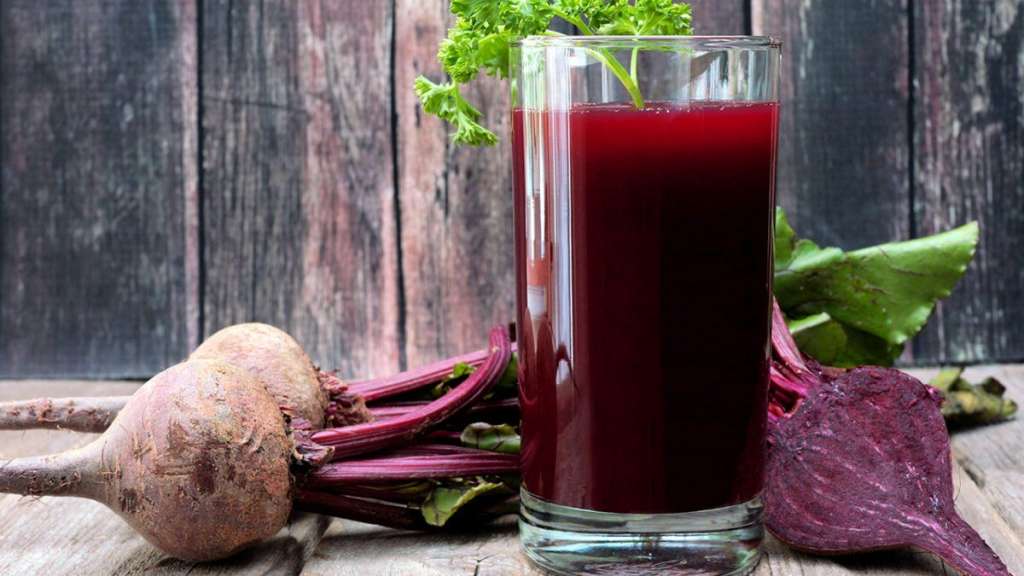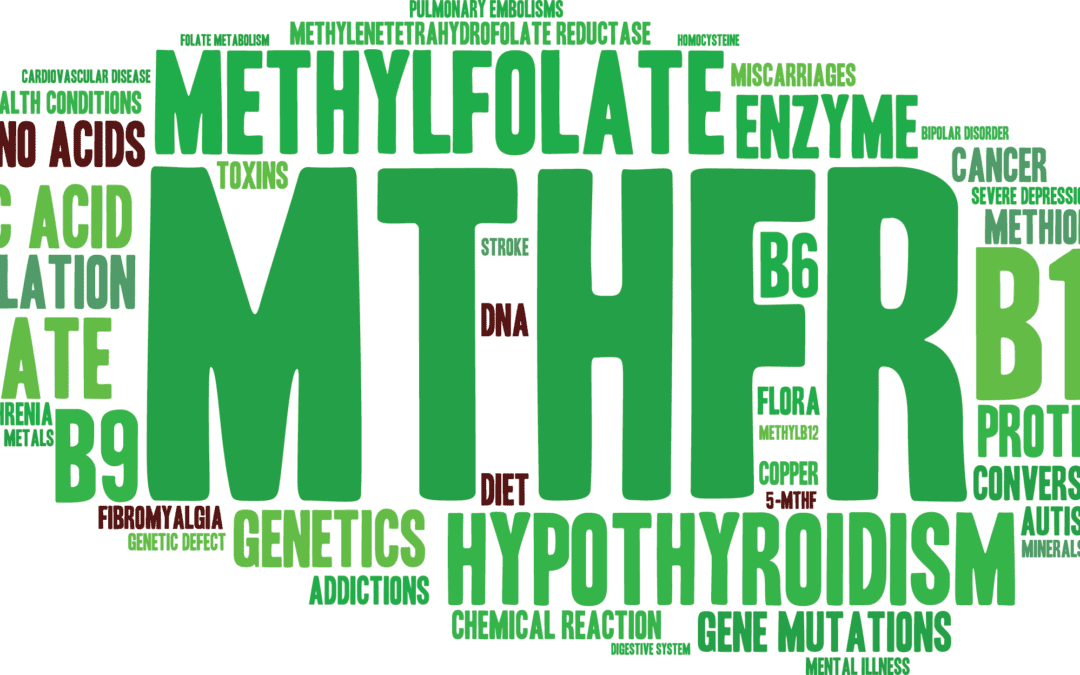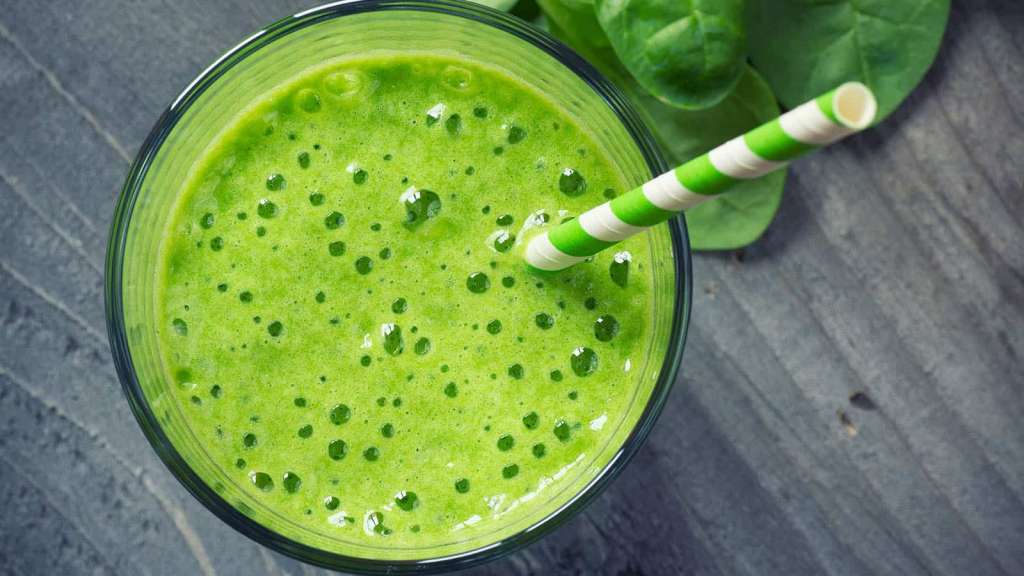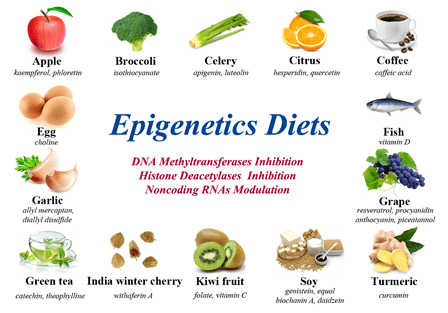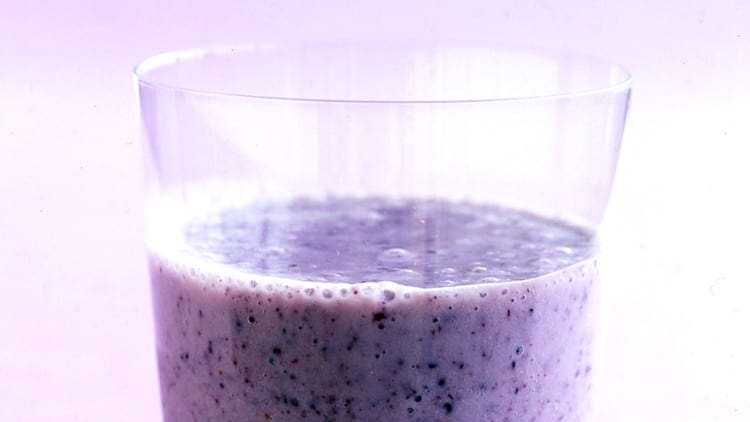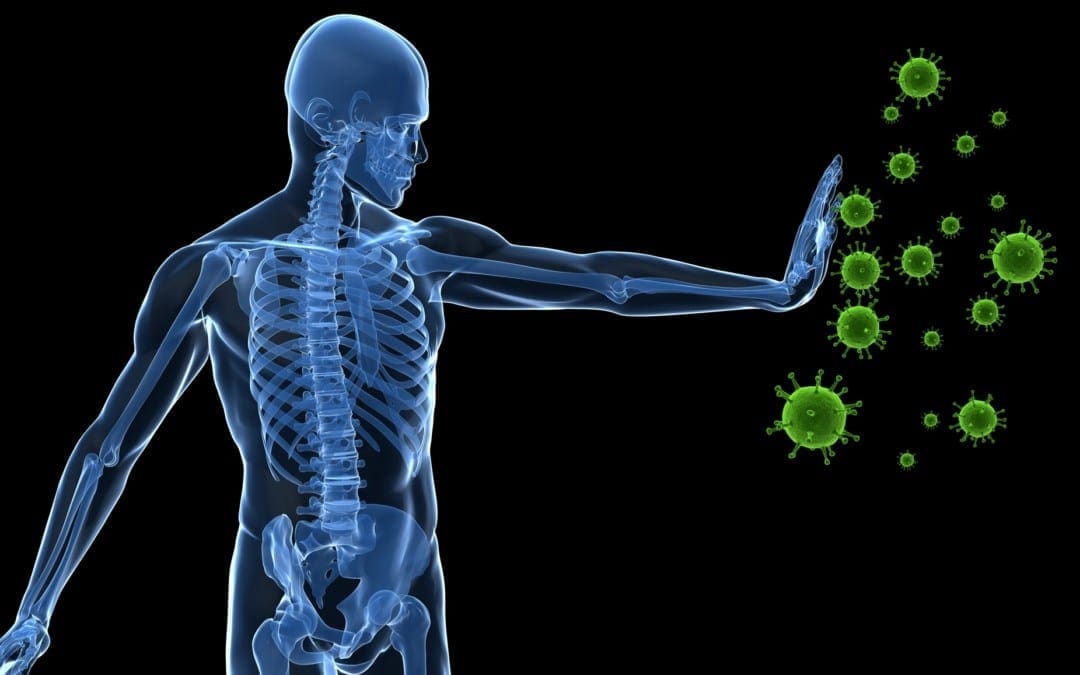Beneficial Micronutrients With Dr. Ruja | El Paso, TX (2021)
Introduction
In today’s podcast, Dr. Alex Jimenez and Dr. Mario Ruja discuss the importance of the body’s genetic code and how micronutrients provide the necessary functional nutraceuticals that the body needs to promote overall health and wellness.
What Is Personalized Medicine?
[00:00:00] Dr. Alex Jimenez DC*: Welcome, guys. We’re Dr. Mario Ruja and me; we’re going to be discussing some essential topics for those athletes that want the advantage. We’re going to discuss fundamental necessary clinical technologies and information technologies that can make an athlete or even just the average person a little bit more aware of what’s happening in terms of their health. There’s a new word out there, and I have to give you a little heads up where we’re calling. We’re actually coming from the PUSH Fitness Center, and that people still work out late at night after going to church. So they’re working out, and they’re having a good time. So what we want to do is bring in these topics, and today we’re going to be talking about personalized medicine, Mario. Ever heard of that word?
[00:01:05] Dr. Mario Ruja DC*: Yeah, Alex, all the time. I dream about it. There you go, Mario.
[00:01:12] Dr. Alex Jimenez DC*: There you go, Mario. Always giving me a laugh. So we’re going to be talking about is the personalized arena of what we have now. We’ve come to a state where many people tell us, Hey, you know what? It would be best if you had some more proteins, fats, or they come up with some convoluted idea, and you’ll end up with your eyes crossed and, most of the time, more confused than anything else. And you’re pretty much a lab rat to all these different techniques, whether it’s the Mediterranean, low fat, high fat, all these kind of things. So the question is, what is it specific to you? And I think one of the frustrations that many of us have, Mario, is that we don’t know what to eat, what to take and what’s good exactly. What’s good for me doesn’t mean that it’s suitable for my friend. You know, Mario, I’d say it’s different. We come from a whole other type of genre. We live in a place, and we’ve gone through things that are different from two hundred years ago. What do people do? We’re going to be able to figure this out nowadays in today’s DNA dynamics; though we don’t treat with these, it gives us information and allows us to relate to the issues that are affecting us now. Today, we will be talking about personalized medicine, DNA testing, and micronutrient assessments. So we’re going to see what it is that how are our genes, the actual predisposing issues, or they’re the ones that give us the the the workings of our engine. And then also, if it’s good for that, we want to know what our level of nutrients is right now. I know Mario, and you had a very dear and near question the other day with one of your, I think, was your daughter. Yeah, so what was her question?
[00:02:52] Dr. Mario Ruja DC*: So Mia had had a well, excellent question. She was asking me about utilizing creatine, which is very predominant in athletes. You see, it’s the buzzword, you know? Use creatine to build more muscle and such. So the point that I talk to you about, Alex, is that this is something so important that we cannot let in terms of the sports environment and performance environment. It’s like taking a Bugatti, and you’re saying, “Well, you know what? Do you think about just putting synthetic oil in it?” And well, is it the synthetic oil necessary for that Bugatti? Well, it’s good because it’s synthetic. Well, no, there are lots of different synthetic forms, you know, it’s like five-thirty, five-fifteen, whatever it is, the viscosity level it has to match. So same thing for athletes and especially for Mia.
[00:04:06] Dr. Alex Jimenez DC*: Let the audience know who Mia is, what does she do? What kind of things does she do?
[00:04:08] Dr. Mario Ruja DC*: Oh, yeah. Mia plays tennis, so her passion is tennis.
[00:04:13] Dr. Alex Jimenez DC*: And she’s nationally ranked?
[00:04:15] Dr. Mario Ruja DC*: Nationally, and she plays internationally on the international circuit ITF. And she’s right now in Austin with Karen and the rest of the Brady Bunch, as I call them. You know, she’s working hard and through all this COVID kind of disconnect. Now she’s getting back into the fitness mode, so she wants to optimize. She wants to do her very best to catch up and move forward. And the question about nutrition, a question about what she needed. I needed a specific answer, not just general. Well, I think it’s good. You know good is good and better is best. And the way we look at it in that conversation of sports performance and genetic, nutritional, and functional medicine, it’s like, let’s get really functional, let’s be on point instead of buckshot. You know, it’s like you can go in and say, you know, generalities. But in terms of this, there is not a lot of information out there for athletes. And that’s where the conversation is linking the genetic and linking the micronutrients. That is phenomenal because, as you mentioned, Alex, when we look at the markers, genetic markers, we see the strengths, the weaknesses, and what’s at risk and what is not. Is the body adaptive, or is the body weak? So then we have to address the micronutrients to support. Remember, we talked about that to support that weakness in that DNA, that genetic pattern with something that we can strengthen. I mean, you can’t go and change your genetics, but you surely can increase and be specific with your micronutrients to change that platform and strengthen it and decrease the risk factors.
[00:06:24] Dr. Alex Jimenez DC*: It’s fair to say now that the technology is such that we can find the, I wouldn’t say weaknesses, but the variables that allow for us to improve an athlete at the genetic level. Now we can’t alter the genes. That’s not what we’re saying is that there’s a world of what they call SNPs or single nucleotide polymorphisms where we can figure out there’s a specific set of genes that can’t change. We can’t change like eye color. We can’t do those. Those are very coded in, right? But there are genes that we can influence through neutral genomics and neutral genetics. So what I mean by my neutral genomics is nutrition altering and affecting the genome to more adaptive or opportunistic dynamics? Now, wouldn’t you like to know what genes you have that are vulnerable? Wouldn’t she want to know where her vulnerability is as well?
Is My Body Receiving The Right Supplements?
[00:07:18] Dr. Mario Ruja DC*: What do we all want to know? I mean, whether you’re a high-level athlete or you’re a high-level CEO, or you’re just a high-level mom and dad, that’s running around from tournament to tournament. You cannot afford to have low energy that, when we talked about the markers, you know that methylation within the body we want to know, are we processing or how are we doing in terms of the oxidative pattern within ourselves? Do we need that extra boost? Do we need to increase your knowledge of that green intake detoxified pattern? Or are we doing well? And this is where when we look at the patterns of genetic markers, we can see that we are well-prepared or we are not well prepared. Therefore, we have to look at the micronutrients. Again, those markers to say, “Are we meeting our needs, yes or no? Or are we just generalizing?” And I would say 90 percent of athletes and people out there are generalizing. They’re saying, Well, you know, taking vitamin C is good and taking vitamin D is good and selenium, you know, that’s good. But again, are you on point, or are we just guessing right now?
[00:08:36] Dr. Alex Jimenez DC*: Exactly. That’s the thing when we’re in that store, and there’s a lot of great nutritional centers, Mario, that are out there, and we’re looking at a wall of a thousand products. Crazy. We don’t know where we have holes, and we don’t know where we need them. You know, there are certain deficiencies. You’ve got bleeding gums; most likely, you’ve got some scurvy or some kind of issue there. That unit may need a specialist, but let’s assume if we look at things like scurvy, right? Well, we know that gum starts bleeding. Well, it’s sometimes not that obvious, right, that we need certain things. There are hundreds and thousands of nutrients out there. One of the things that we call them, we call them, is cofactors. A cofactor is a thing that allows an enzyme to work right. So we are a machine of enzymes, and what codes those enzymes? Well, the DNA structure. Because it produces the proteins that code those enzymes, those enzymes have code factors like minerals like magnesium, iron, potassium, selenium, as you mentioned, and all different components. As we look at this, this hole that we’re we’re facing a wall. We would love to know exactly where our holes are because Bobby or my best friend says, you know, you should take protein, take whey protein, take iron, take what may be so, and we’re hit or miss. So today’s technology is allowing us to see precisely what it is, where we have the holes.
[00:10:00] Dr. Mario Ruja DC*: And this point that you mentioned about the holes, again, the majority of the factors are not that extreme like scurvy, you know, bleeding gums. We’re not, I mean, we live in a society where we’re gosh, I mean, Alex, we have all the foods that we need. We’ve got too much food. It’s crazy. Again, the issues that we talk about are overeating, not starving, OK? Or we’re overeating and still starving because the nutritional pattern is very low. So that’s a real factor there. But overall, we are looking and addressing the component of what subclinical issues, you know, we don’t have the symptoms. We don’t have those significant marker symptoms. But we do have low energy, but we do have a low recovery pattern. But we do have that problem with sleep, that quality of sleep. So those are not huge things, but those are subclinical that erode our health and performance. For example, little by little, athletes cannot be just good. They need to be the tip of the spear top. They need to recover quickly because they do not have time to guess their performance pattern. And I see that they don’t.
[00:11:21] Dr. Alex Jimenez DC*: You know, as you mentioned that, I mean, most of these athletes, when they want to, they want to assess their bodies. They want to know where every weakness is. They’re like scientists and laboratory rats for themselves. They’re pushing their bodies to the extreme, from mental to physical to psycho-social. Everything is being affected, and put it in at full throttle. But they want to know. They want to see where that extra edge is. You know what? If I could make you a little bit better? If there was a little hole, what would that amount to? Will that amount to a two more second drop over a while, a microsecond drop? The point is that technology is there, and we have the ability to do these things for people, and the information is coming faster than we can even imagine. We have doctors worldwide and scientists around the world looking at the human genome and seeing these issues, specifically at SNPs, which are single nucleotide polymorphisms that can be changed or altered or assisted in dietary ways. Go ahead.
Body Composition
[00:12:21] Dr. Mario Ruja DC*: I’ll give you one: the Inbody. How about that? Yeah, that’s a tool right there that is critical for a conversation with an athlete.
[00:12:31] Dr. Alex Jimenez DC*: The Inbody is the body composition.
[00:12:32] Dr. Mario Ruja DC*: Yeah, the BMI. You’re looking at it in terms of your hydration pattern; you’re looking at in terms of like, yes, body fat, that that whole conversation everyone wants to know, you know, I’m overweight my belly fat again. We had discussions on metabolic syndrome. We talked about risk factors, high triglycerides, very low HDL, high LDL. I mean, those are risk factors that put you in a pattern in that line towards diabetes and that line towards cardiovascular disease in that line of dementia. But when you’re talking about an athlete, they’re not worried about diabetes; they’re concerned about, am I ready for the next tournament? And I’m going to make the cut going to the Olympics. That’s yes, I mean, they’re not what they want to do that Inbody. They’re the micronutrient, the combination of genome nutrition, that genomic nutrition conversation on point allows them to honor their work. Because I’m telling you, Alex, and you know, this here, I mean, everyone’s listening to us, again, the conversation I share with people is this, why are you training like a pro when you don’t want to be one? Why are you trained like a pro when you are not eating and have the data to support that pro-level workout? What you’re doing? If you don’t do that, you are destroying your body. So again, if you’re working as a pro, that means you’re grinding. I mean, you’re pushing your body to little miss neuromuscular. Furthermore, we’re chiropractors. We deal with inflammatory issues. If you’re doing that, you’re redlining that, but you are not turning around to recover through micronutrition-specific chiropractic work. Then you’re going to damn it; you’re not going to make it.
[00:14:26] Dr. Alex Jimenez DC*: We’re going to show that we’ve been able to see in a lot of times cities come together for specific sports, such as like wrestling. Wrestling is one of those notorious sports that puts the body through massive emotional and physical stresses. But a lot of times, what happens is individuals have to lose weight. You’ve got a guy who’s 160 pounds; he’s got a drop-down 130 pounds. So what the city has done to avoid these things is to use body-specific weight and determine the molecular weight of the urine, right? So they can tell, are you too concentrated, right? So what they do is that they have all these kids line up all the way to UTEP, and they do a specific gravity test to determine if they’re able to lose any more weight or what weight they are allowed to lose. So someone who’s about 220 says, You know what? You can drop up to about, you know, x y z pounds based on this test. And if you violate this, then you do that. But that’s not good enough. We want to know what’s going to happen because when the kids are in a load and are fighting another person that is just as good of an athlete, and he’s pushing his body, that’s when the body collapses. The body can handle the load, but the supplementation that the person has had, maybe their calcium, has been so depleted that suddenly you got this kid who was 100 injuries; the injuries, the elbow snapped dislocated. That’s what we see. And we wonder how did he snap his elbow because his body has been depleted from these supplements?
[00:15:59] Dr. Mario Ruja DC*: And Alex, on the same level, you’re talking about one on one like that pugilistic, that intense three minutes of your life on the other level, when it comes to tennis, that’s a three-hour conversation. Exactly. There are no subs there. There’s no coaching, no subs. You are in that gladiator arena. When I see Mia playing OK, I mean, it is intense. I mean, every ball that’s coming to you, it’s coming to you with power. It’s coming in like, can you take this? It’s like someone fighting across a net and looking at it. Are you going to quit? Are you going to chase this ball? Are you going to let it go? And that is where that definitive factor of optimal micronutrition connected with the conversation of what exactly you need in terms of genomic conversation will allow someone to scale up with a decreased risk factor of injuries where they know they can push themselves more and have the confidence. Alex, I’m telling you this is not just nutrition; this is about the confidence to know I got what I need, and I can redline this thing, and it’s going to hold. It’s not going to buckle.
[00:17:23] Dr. Alex Jimenez DC*: You know what? I’ve got little Bobby. He wants to wrestle, and he wants to be the biggest nightmare is the mom. Because you know what? They’re the ones that wish Bobby to thump the other Billy, right? And when their kids are getting thumped on, they want to provide for them. And moms are the best cooks. They’re the ones who take care of them, right? They’re the ones that make sure, and you could see it. The pressure on the child is immense when parents are watching, and sometimes it’s incredible to watch. But what can we give moms? What can we do for the parents to provide them with a better understanding of what’s going on? I got to tell you today with DNA tests. You know, all you have to do is get the kid in the morning, open his mouth, you know, do a swab, drag that stuff off the side of his cheek, put in a vial, and it is done within a couple of days. We can tell if Bobby’s got strong ligaments, if Bobby’s micronutrient levels are different to provide the parent with a better kind of a roadmap or a dashboard to understand the information that’s affecting Bobby, so to speak, correct?
[00:18:27] Dr. Mario Ruja DC*: Because and this is what we’ve come a long way. This is 2020, guys, and this is not 1975. That’s the year when Gatorade came over.
[00:18:42] Dr. Alex Jimenez DC*: Come on; I got my tub. It’s got a lot of things on the side of it. I will have everything you look like Buddha when you develop diabetes with so much sugar from those protein shakes.
The Right Supplements For Kids
[00:18:52] Dr. Mario Ruja DC*: We have come a long way, but we cannot just go in and go; oh, you need to hydrate here drink these electrolytes, Pedialyte and all that. That’s not good enough. I mean, that’s good, but it’s 2020, baby. You got to scale up and level up, and we can’t use old data and old instrumentation and diagnostics because the kids now start at three years old, Alex. Three years old. And I’m telling you right now at three, it is unbelievable. By the time they’re five and six, I mean, I’m telling you the kids that I see, they’re already in select teams.
[00:19:33] Dr. Alex Jimenez DC*: Mario…
[00:19:34] Dr. Mario Ruja DC*: Six years old, they’re in a select team.
[00:19:36] Dr. Alex Jimenez DC*: The thing that determines if a child is ready is their attention span. Yeah, I got to tell you, you can watch this. You got to see a kid who’s at three years and six months, and he isn’t paying attention. Three years and eight-month, all of a sudden, he can focus.
[00:19:50] Dr. Mario Ruja DC*: It’s on like a light switch.
[00:19:52] Dr. Alex Jimenez DC*: In front of the coach, right? And you can tell because they wander and they’re not ready. So we’re bringing the kids and exposing them to loads of experiences. Then what we need to do is give moms and dads the ability to understand and athletes of the NCAA and see how I can see what’s happening in my bloodstream? Not a CBC, because the CBC is for basic stuff, like a red blood cell, white blood cell. We can do things. Metabolic panel tells us a generic thing, but now we know more profound information about the susceptibility of the gene markers and see this on the test. And these reports tell us precisely what it is and how it pertains now and progression.
[00:20:37] Dr. Mario Ruja DC*: So this is where I love. This is where I love everything in the world of performance is pre and post. So when you’re a sprinter, they time you. It’s electronic time; when you’re a wrestler, they look at you. Do you know what your winning ratio is? What’s your percentage? Anything, it’s all data. It’s data-driven. As a tennis player, a soccer player, they will track you. Computers will track how strong? How fast is your serve? Is it 100 miles an hour? I mean, it is crazy. So now, if you have that data, Alex, why is it that we do not have the same information for the most critical component, which is that biochemistry, that micro nutritional, the foundation of performance is what happens inside of us, not what happens outside. And this is where people get confused. They think, “Well, my kid works four hours a day, and he has a private trainer. Everything.” My question is that is good, but you’re putting that kid at risk if you are not supplementing on point, say precisely when it comes to the special needs of that child or that athlete, because if we don’t do that, Alex, we are not honoring the journey and the battle, that warrior, we’re not. We’re putting them at risk. And then, all of a sudden, you know what, two-three months before a tournament, BAM! Pulled a hamstring. Oh, you know what? They got fatigued, or all of a sudden, they had to pull out of a tournament. You see, I see tennis players doing all of that. And why? Oh, they’re dehydrated. Well, you should never have that problem. Before you go in exactly where you are, you should already know what you’re doing. And I love the combination and a platform that we have for all of our patients because, within two or three months, we can show pre and post, can we?
[00:22:39] Dr. Alex Jimenez DC*: We can show body composition to the Inbody systems and the incredible systems we use. These DEXAS, we can do bodyweight fat analysis. We can do a lot of things. But when it comes down to predispositions and what’s unique to individuals, we go down to the molecular level, and we can go down to the level of the genes and understand what the susceptibilities are. We can go on once we have the genes. We can also understand the micronutrient level of each individual. So what’s pertaining to me? I may have more magnesium than you, and the other child may have depleted magnesium or calcium or selenium or his proteins or the amino acids or are shot. Maybe he’s got a digestive issue. Perhaps he’s got lactose intolerance. We need to be able to figure out these things that affect us.
[00:23:29] Dr. Mario Ruja DC*: We can’t guess. And the bottom line is there’s no need for that. Everyone has that beautiful conversation, Alex, about, “Oh, you know what? I feel OK.” When I hear that, I cringe, go, and feel OK. So you mean to tell me that you are putting your health the most precious thing you have and your performance based on a feeling like, wow, that means that your urine receptors and turns the pain tolerance are dictating your health. That’s dangerous. That is completely dangerous. And also, so clinically, you’re not able to feel your deficiency in terms of vitamin D, your deficiency in terms of selenium, your deficiency in vitamin A, E. I mean, all of these markers, you can’t feel it.
[00:24:21] Dr. Alex Jimenez DC*: We need to start presenting to the people out there, the information, it’s out there because what we want to let people know is that we’re going deep. We’re going down to these gene susceptibilities, the gene understanding as it is today; what we have learned is so powerful that it allows parents to understand a whole lot more of the issues pertaining to an athlete. Not only that, but the parents want to know what my susceptibility is? Do I have a risk of bone arthritis? Do we have issues with oxidative stress? Why am I always inflamed all the time, right? Well, believe it or not, if you got the genes for, let’s say you got the gene that makes you eat a lot, well, you’re likely going to gain weight. You can raise 10000 people’s hands who have that same gene marker, and you’re going to notice that their BIAs and BMI are way out of there because it’s the susceptibility to that now. Can they change it? Absolutely. That’s what we’re talking about. We’re talking about understanding the ability to adapt and change our lifestyle for the predispositions we may have.
[00:25:26] Dr. Mario Ruja DC*: Yeah, this is wonderful. And I see this quite frequently in terms of the conversation about losing weight, you know, and they go, “Oh, I did this program, and it works great.” And then you have 20 other people doing the same program, and it doesn’t even work, and it’s almost like hit and miss. So people are becoming disillusioned. They’re putting their bodies through this incredible roller coaster ride, which is like the worst thing you could do. You know, they’re doing these unnecessary things, but they cannot sustain it because why? At the end of the day, it’s not who you are. It wasn’t for you.
[00:26:05] Dr. Alex Jimenez DC*: You may need a different type of diet.
[00:26:06] Dr. Mario Ruja DC*: Yes. And so we, again, our conversation today is very general. We’re starting this platform together because we have to educate our community and share the latest in technology and science that addresses the needs.
[00:26:26] Dr. Alex Jimenez DC*: Personalized medicine, Mario. It’s not general; it’s a personalized health and personalized fitness. We understand that we don’t have to guess if a diet is better for us, such as a low calorie, high-fat diet or a Mediterranean style food or a high protein diet. We won’t be able to see that these scientists are putting information together from the information we are continuously gathering and compiling. It’s here, and it’s a swab away, or blood works away. It’s crazy. You know what? And this information, of course, let me be mindful of before this starts. My little disclaimer comes in. This is not for treatment. Please do not take anything; we’re taking this for treatment or diagnosis. You got to talk to your doctors, and your doctors have to tell you exactly what’s up there and what’s appropriate for every individual we integrate.
[00:27:18] Dr. Mario Ruja DC*: The point is that we integrate with all healthcare professionals and physicians. We are here to support and champion functional wellness. OK. And as you mentioned, we’re not here to treat these diseases. We’re here to optimize again when athletes come in and want to be better. They want to get healthier and help the recovery rate.
Can Stress Age You Faster?
[00:27:46] Dr. Alex Jimenez DC*: You know, that’s it. Do you know what the bottom line is? The testing is there. We can see Billy’s not been eating well. OK, Billy has not been eating well. I can tell you, well, he eats everything, but he hasn’t had this level of protein. Look at his protein depletion. So we’re going to present to you some of the studies out here because it’s information, though it’s a bit complex. But we want to make it simple. And one of the things that we were talking about here is the micronutrient test we were providing here. Now I’m going to present you guys to see a little bit here. And what we use in our office when a person comes in and says, I want to learn about my body. We present this micronutrient assessment to figure out what’s going on. Now, this one was, let’s say, just it was in a sample for me, but it tells you where the individual is. We want to be able to level the antioxidant level. Now everyone knows that, well, not everyone. But now we understand that if our genes are optimal and our food is optimal, but we live in an oxidative stress state…
[00:28:45] Dr. Mario Ruja DC*: Exactly
[00:28:46] Dr. Alex Jimenez DC*: Our genes will not function. So it’s important to understand what the problem is.
[00:28:51] Dr. Mario Ruja DC*: It’s rust. I mean, when you’re looking at this, and I see two markers, I see the one for oxidative, and then the other one is the immune system. Yes, right? So again, they correlate together, but they are different. So the oxidative I talk about is like your system is rusting out. Yeah, that’s oxidation. You see apples turning brown. You see metals rusting. So inside, you want to absolutely be at your best, which is in the green in that 75 to 100 percent functional rate. That means you can handle the craziness of the world tomorrow, you know?
[00:29:31] Dr. Alex Jimenez DC*: Yes, we can look at the stress of the human body, Mario. What we can see actually what’s going on, and as I continue with this kind of presentation here, we can see what this individual is and what is his actual immune function age. So a lot of people want to know this stuff. I mean, I want to know where I lie in terms of the dynamics of the body, right? So when I look at that, I can see precisely where I lie, and my age is 52. OK. In this situation, OK, now as we look down, we want to know.
[00:30:02] Dr. Mario Ruja DC*: Hold on. Let’s get real. So you mean to tell me that we can get younger through this incredible system? Is that what you’re telling me?
[00:30:14] Dr. Alex Jimenez DC*: It tells you if you’re aging quicker, OK, how does that sound, Mario? So if you can slow down, if you’re in that top 100, the green, you’re going to be looking like a 47-year-old man when you’re 55. Right? So from the structure, immune function, and oxidative stress in the body, what’s going to happen is that we’re going to be able to see exactly where we are in terms of our body.
[00:30:37] Dr. Mario Ruja DC*: So that is correct? Yes. So we could be our birth certificate could say 65, but our functional metabolic markers can say you’re 50.
[00:30:51] Dr. Alex Jimenez DC*: Yes. Let me make it real simple, OK? People often understand oxidative stress; yes, we hear about antioxidants and reactive oxygen species. Let me make it simple, OK, we’re a cell. You and I, we’re having a family meal right where we’re enjoying ourselves. We are normal cells. We’re happy, and we’re functioning where everything is appropriate. All of a sudden, there’s a wild-looking lady. She’s got blades and knives, and she’s greasy, and she’s slimy, and she comes on. She hits the table, boom, and she kind of walks away. You know, it’s going to unsettle us, right? It’s going to be, let’s call her an oxidant, OK? She’s called a reactive oxygen species. Now, if we got two of those walking around the restaurant, we kind of keep an eye on her, right? All of a sudden, a football player comes and takes her out. Boom knocks her out, right? In that situation, this greasy, slimy weapon-looking lady, correct, that’s scary. That was an antioxidant. That was vitamin C that wiped her out, right? There’s a balance between oxidants and antioxidants in the body. They have different purposes, right? We have to have antioxidants, and we have to have oxidants in order for our body to function. But if you got 800 of those ladies like zombies all of a sudden.
[00:32:02] Dr. Mario Ruja DC*:I could see them as zombies.
[00:32:07] Dr. Alex Jimenez DC*: It is. You know what you’re going to want. Where are the football players? Where are the antioxidants, right? Take them out. The football players come in, but there are just too many of them, right? Anything that you and I do in a conversation could be healthy cells, and we’re having this conversation at the dinner table. We’re disrupted totally. We cannot function in an oxidative stress environment. No. So basically, we may have all the supplements, and we may have all the nutrients, and we may have the proper genetics. But if we’re in an oxidative state, right, an elevated level, we’re not going to be aged. It will not be a comfortable night, and we will not recover.
[00:32:46] Dr. Mario Ruja DC*: We will be at a higher risk factor for injuries. Exactly. And the other thing is we also have the risk factor where we will age faster than we should.
[00:33:04] Dr. Alex Jimenez DC*: That night would be rough is there’s like a hundred of those people around. So we need to know the state of the balance in life, the antioxidants we see, and all the antioxidants foods like A, C, E. That is what this test does. It shows you the level of oxidants in the body.
[00:33:19] Dr. Mario Ruja DC*: Hey, Alex, let me ask you this. Everyone loves to work out. When you work out, does that increase or decrease your oxidative stress? Please tell me, because I want to know.
[00:33:30] Dr. Alex Jimenez DC*: It increases your oxidative state.
[00:33:31] Dr. Mario Ruja DC*: No, stop it.
[00:33:32] Dr. Alex Jimenez DC*: It does because you’re breaking the body down. However, the body responds. And if we are healthy, Mario, right? In that sense, our body first has to break down, and it has to repair. OK? We want to have antioxidants because it helps us go through the process. Part of healing and part of inflammation is oxidative balance. So, in essence, when you’re working out too hard or running hard, you can overburn the bar, and those are the things that you and I have to kind of look at, and this is the balance.
[00:34:08] Dr. Mario Ruja DC*: Now this is like the paradox, right? You know what, if you overwork, you’re going to look fabulous. But you know what? You’re actually breaking down. And if you don’t work out, there goes your cardio. There go other risk factors. So this is where it is so critical that we need to balance and know precisely what each person needs to be at their best. And we can’t guess; you can’t take the same supplements as me and vice versa.
The Right Cofactors For Your Body
[00:34:41] Dr. Alex Jimenez DC*: I can, we can. But it’s to me, I may not be a lot of waste of money, or maybe we’re just missing the whole process. So in this entire dynamics here, just looking at this test, Mario, just using it at this particular assessment, we want to see also what our cofactors are on. We talked about proteins; we talked about genetics. We talked about things that make these enzymes work, our body functions, and pure enzymes in this particular model that you’re seeing what the cofactors are and the metabolites are. Well, you see amino acids levels and where they are in your body. If you’re an extreme athlete, you want to know what those things are.
[00:35:14] Dr. Mario Ruja DC*: Oh yeah, I mean, look at that. Those aminos. Those are critical.
[00:35:20] Dr. Alex Jimenez DC*: You think Mario?
[00:35:21] Dr. Mario Ruja DC*: Yeah, I mean it’s like every athlete I know, they’re like, Hey, I got to take my aminos. My question is, are you taking the right ones at the right level? Or do you even know, and they’re guessing. Ninety percent of the people are assuming you’re looking at antioxidants. Look at that. That’s the beast right there, glutathione. That’s like the granddaddy of antioxidants right there. And you want to know is, is that football players, that linebackers are going to crush those zombies, you know? And again, vitamin E, CoQ10. Everyone talks about CoQ10 and heart health.
[00:36:00] Dr. Alex Jimenez DC*: Coenzyme Q, exactly. A lot of people take cardiac medications specifically to lower their cholesterol.
[00:36:10] Dr. Mario Ruja DC*: What does CoQ10 do, Alex? I want to get you started.
[00:36:15] Dr. Alex Jimenez DC*: Because you know what? Many documentation came out early on when they did many of these medications. Yeah, they knew they had to end it and put coenzyme Q in it. They knew, and they patented it because they knew that they had it. Because if you don’t give coenzyme Q right, you have inflammatory states and neuropathies. But these people have issues, and now they’re starting to understand. That’s why you see all the commercials with the coenzymes. But the point is that we need to know where our present state is right. So when we understand those things, we can look at the tests. And we can look at the dynamics of it. Wouldn’t you like to know which antioxidants? It’s so clear.
[00:36:52] Dr. Mario Ruja DC*: I love this. I mean, look at that. You know what? It’s red, green, black and that’s it. I mean, you can see it right away. This is your board. This is your command center. You know, I love the command center. It’s like, everything’s there.
[00:37:10] Dr. Alex Jimenez DC*: I know Mario, you know, with those athletes, they want to be at the top level. Yes, it looks like this person’s floating somewhere in the middle, but they want to top it at 100 percent, right?
[00:37:19] Dr. Mario Ruja DC*: Alex, they’re on the bench.
[00:37:23] Dr. Alex Jimenez DC*: Yeah. And when they’re under a lot of stress, who knows what? Now, these tests are straightforward to do. They’re not complex to go in. Take a lab test sometimes are these are urine tests, something we can do.
[00:37:33] Dr. Mario Ruja DC*: And we can do those in our offices in a matter of minutes, precisely in a matter of minutes. Crazy.
[00:37:38] Dr. Alex Jimenez DC*: It’s crazy.
[00:37:40] Dr. Mario Ruja DC*: This is why it’s so simple. It’s like my question is, what color is the red bus? I don’t know. It’s a trick question.
What Supplements Are Right For You?
[00:37:50] Dr. Alex Jimenez DC*: Well, going back into our topic today was personalized medicine and personalized wellness and personalized fitness. Doctors around the country are starting to understand that they cannot just say, OK, you’re pregnant. Here’s a folic acid pill. OK, here are some nutrients, though every doctor has to be taking care of their own clients. They’re the ones that are doing this. But people have the ability to understand; where are the other holes? Wouldn’t you want to make sure you have suitable selenium?
[00:38:17] Dr. Mario Ruja DC*: Before you have symptoms. That’s the thing, and this is why we are not treating. We’re not saying that issues, diagnosis issues, what are you doing to optimize and decrease your risk factors?
[00:38:35] Dr. Alex Jimenez DC*: There’s the issue of longevity, too, because I mean, the issue of longevity is if you’re providing your body with the right substrates, the right cofactors, the right nutrition. Your body has a chance to make it to 100 years plus and actually function. And if you have a depleted life, well, you’re burning the engine, so the body starts having issues, you know, so as we look at those kinds of things…
[00:39:00] Dr. Mario Ruja DC*: Can you return to our two markers? Look at that immune system.
[00:39:12] Dr. Alex Jimenez DC*: Yeah, there’s a reason they stop here at 100 because that’s the whole idea. The entire idea is to get you to live 100 Centennial. So if we can do this, if you’re a person who’s, let’s say, 38 years old, and you’re in the midst of your life, and let’s say you’re a business person and you’re a junkie for business. You’re a junkie for entrepreneurship. You want to throttle you against the world. You do not want a kind of Nicholas the worm weakness, so to speak, taking you out of your football run in life. Because otherwise, you can trip up on things. And what we want to be able to provide people through nutritionists who registered dietitians to doctors through the information out there to supplement your lives better. And it’s not just about little Bobby; it’s about me, it’s about you. It’s about our patients. It’s about every single one of them who wants to live a better quality of life. Because if there’s a depletion in certain things, it’s not now. But in the future, you may have a susceptibility that will bring out diseases. And that’s where those susceptibilities are. We can take it to the next level because we can see what’s going on. In terms of this, I’m going to go ahead and bring this back up here so you can just see what we’re looking at. You can see the B-complex is now we have a lot of B-complexes, and we got people texting all over the place here, and I’m getting zapped with messages.
[00:40:42] Dr. Mario Ruja DC*: Your oxidative stress is going up, Alex.
[00:40:45] Dr. Alex Jimenez DC*: Well, it’s crazy that we’ve been here an hour, so we want to be able to bring information out for you guys as time goes on. I want to go through this and talk about the individual antioxidants now; those are your football players, man, those are the ones taking those people out. Making your whole life a lot better, right, Mario. This is the kind of stuff that we look at. You know your glutathione on your knees. Your coenzyme Q selenium is your vitamin E’s carbohydrate metabolism.
[00:41:10] Dr. Mario Ruja DC*: Look at that, I mean, glucose and insulin interaction called energy. The last time I checked, it was called turbo.
[00:41:21] Dr. Alex Jimenez DC*: We got to listen; we got a lot of good doctors. We got like Dr. Castro out there. We got all the great doctors out there that are running over.
[00:41:30] Dr. Mario Ruja DC*: I mean, we’re going to get in trouble.
[00:41:32] Dr. Alex Jimenez DC*: All right. Facebook is going to knock us out.
[00:41:41] Dr. Mario Ruja DC*: It will put a time limit on this.
[00:41:43] Dr. Alex Jimenez DC*: I think it’s our views. But the bottom line is to stay tuned. We’re coming. This can’t cover everything. Hey, Mario, when I went to school, we were terrorized by this machine called the psycho cycle.
[00:41:58] Dr. Mario Ruja DC*:How many ATP’s, Alex?
[00:42:00] Dr. Alex Jimenez DC*: I mean, how many miles? Is it glycolysis or aerobic or anaerobic, right? So when we start looking at that, we start seeing how those coenzymes and those vitamins play a role in our energy metabolism, right? So in this individual, there were certain depletions. You can see where the yellow comes in. It affects the whole metabolic process, energy production. So the person is always tired. Well, we kind of understand the dynamics of what’s going on. So this is critical information as you and I kind of look at this, right? We can see what is it that we can offer? Can we provide information to change how the body works better dynamically? So this is crazy. So, in terms of it, we can go on and on, guys. So what we’re going to be doing is we’re probably going to be coming back because this is just fun. Do you think so? Yeah, I think we’re going to come back to what we’ve got to change the way that all El Paso is and not only for our community but also for those moms who want to know what is the best for their family members. What can we offer? The technology is not. We’re not going to allow ourselves in El Paso to be ever called the fattest sweaty town in the United States. We do have unbelievable talent out here that really can teach us about what’s going on. So I know that you’ve seen that, correct? Yeah.
[00:43:18] Dr. Mario Ruja DC*: Absolutely. And what I can say is this Alex? It’s about peak performance and peak ability. And also, getting the correct specific customized genomic nutrition pattern for each individual is the game-changer. That’s the game-changer from longevity to performance and just being happy and living the life that you were meant to live.
Conclusion
[00:43:51] Dr. Alex Jimenez DC*: Mario, I can say that when we look at this stuff, we get excited about it, as you can tell, but it affects all our patients. People come in all depleted, tired, in pain, inflamed, and sometimes we need to find out what it is. And in our scope, we are mandated to be responsible and figure out where this relies upon and where this lies in our patients’ problems. Because what we’re doing, if we help their structure, the musculoskeletal, neurological system, their mind system through a proper diet and understanding through exercise, we can change people’s lives, and they want to be able to fulfill their lives and enjoy their lives the way it should be. So there’s a lot to be said. So we will come back sometime next week or this week. We’re going to continue this topic on personalized medicine, personalized wellness, and personalized fitness because working with many doctors through integrative health and integrative medicine allows us to be a part of a team. We have GI doctors, you know, cardiologists. There’s a reason we work as a team together because we all bring a different science level. No team is complete without a nephrologist, and that person will figure out precisely the implications of all the things we do. So that person is very important in the dynamics of integrative wellness. So for us to be able to be the best kind of providers, we have to expose and tell people about what’s out there because a lot of people don’t know. And what we need to do is bring it to them and let the cards lie and teach them that they had to tell their doctors, “Hey, Doc, I need you to talk to me about my health and sit down. Explain to me my labs.” And if they don’t, well, you know what? Say you need to do that. And if you don’t, well, time to find a new doctor. OK, it’s that simple because today’s information technology is such that our doctors cannot neglect nutrition. They cannot neglect wellness. They cannot overlook the integration of all the sciences put together to make people healthy. This is one of the most important things that we got to do. It’s a mandate. It’s our responsibility, and we’re going to do it, and we’re going to knock it out of the ballpark. So, Mario, it’s been a blessing today, and we’ll continue to do this in the next couple of days, and we’ll keep on hammering and giving people the insights as to what they can do in terms of their science. This is a Health Voice 360 channel, so we’re going to talk about many different things and bring a lot of other talents. Thanks, guys. And you got anything else, Mario?
[00:46:11] Dr. Mario Ruja DC*: I’m all in.
[00:46:12] Dr. Alex Jimenez DC*:All right, brother, talk to you soon. Love you, man. Bye.



